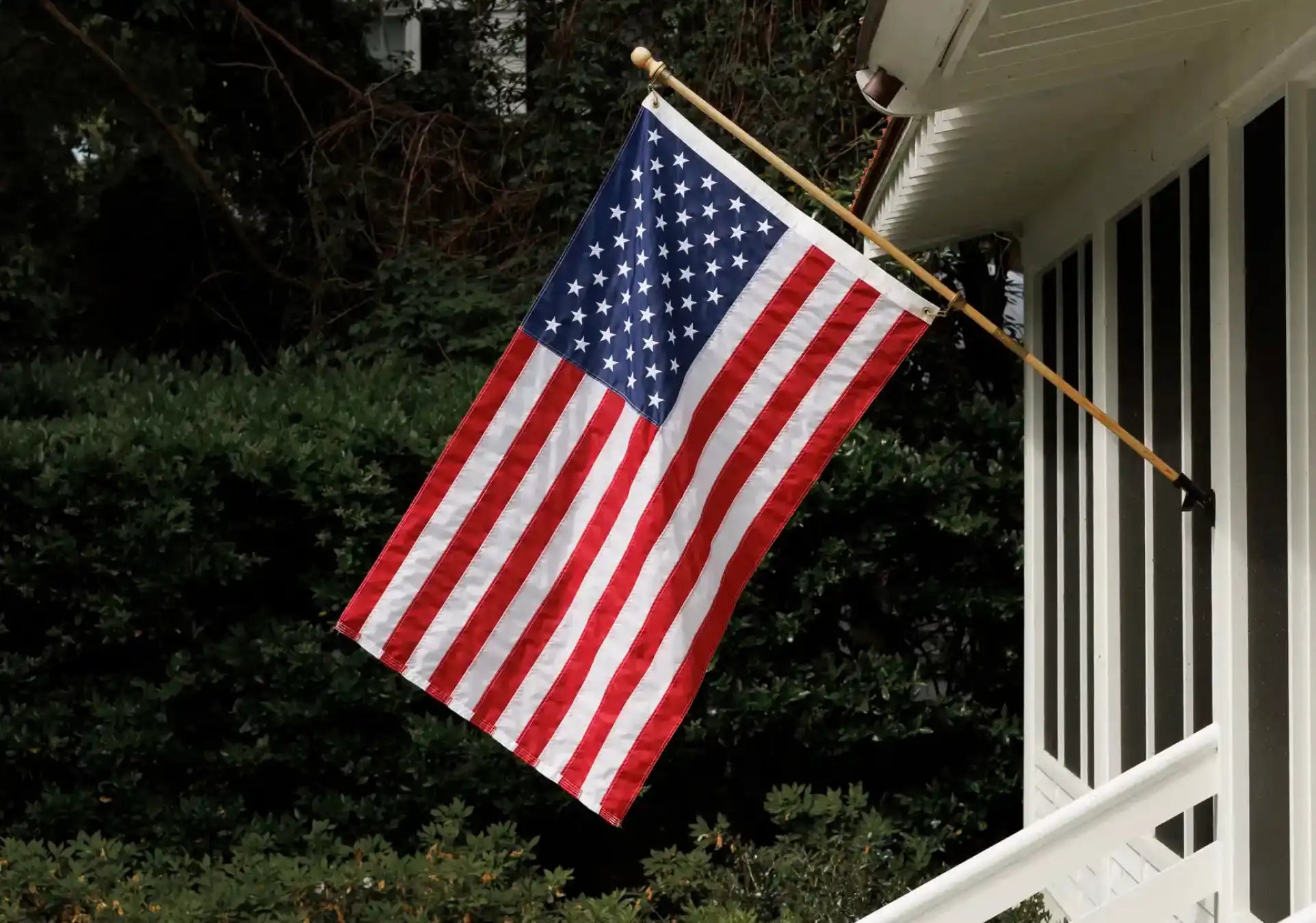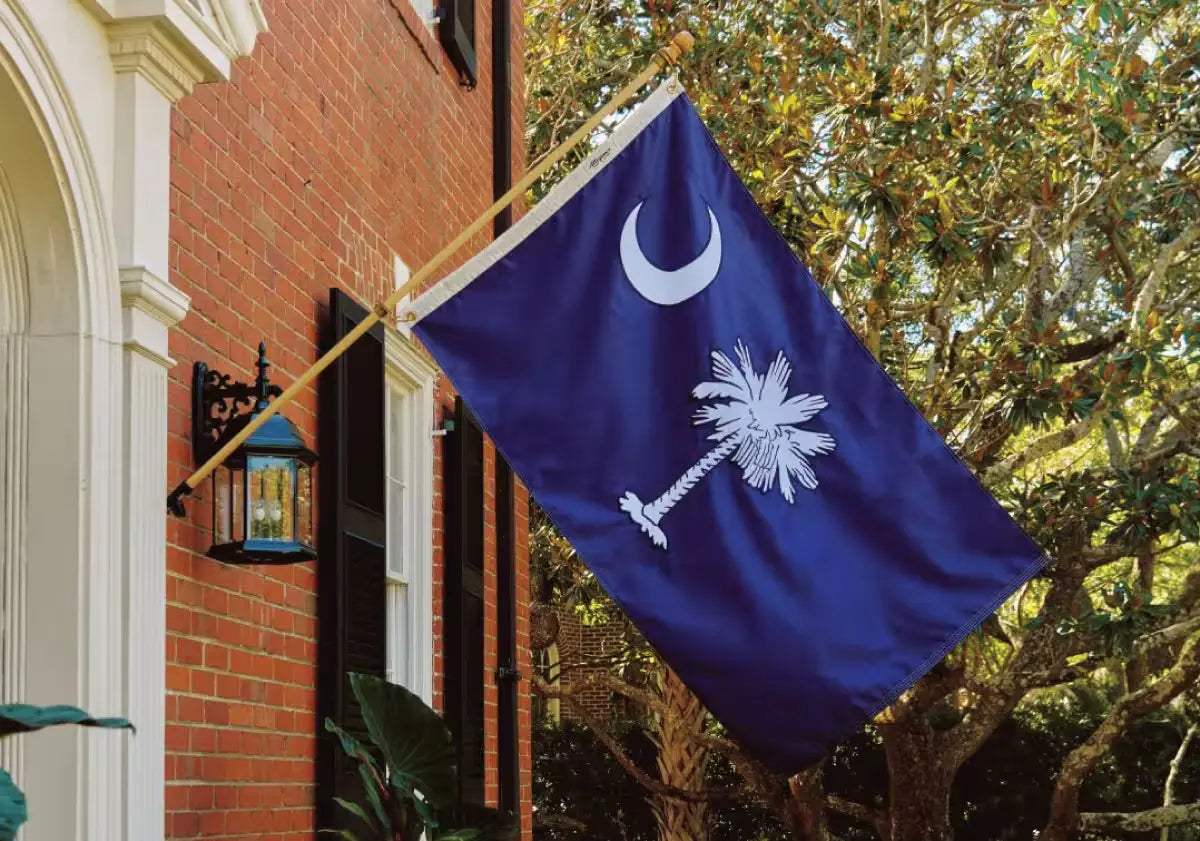The tradition of handcrafted American flags carries with it not just the history of a nation, but the stories and dedication of the artisans who create them. These flags are more than just symbols; they are a testament to the skill, patience, and patriotism of those who sew each stripe and star by hand. This craftsmanship dates back centuries and is intertwined with the very fabric of American history, representing a continuous thread of dedication and artistry. Celebrating this craft is not only about acknowledging the aesthetic and symbolic value of these flags but also about recognizing the individuals whose hands have meticulously contributed to this integral part of American heritage.
The History of American Flag Craftsmanship
Tracing the Origins
The history of making American flags by hand is as old as the nation itself, with roots stretching back to the early days of American independence. Initially, flags were made from whatever materials were available, often repurposed from sails, uniforms, or other fabrics. These early flags were symbols of rebellion and unity, sewn together by individuals who believed deeply in the cause of American independence.
Evolution of Techniques Over the Centuries
Over the centuries, the techniques for making American flags by hand have evolved significantly, reflecting changes in materials, technology, and societal values. This transformation from purely hand-sewn artifacts to a blend of mass-produced and artisanal flags highlights the shifting dynamics between tradition and innovation.
-
18th Century: In the early days of the United States, flag-making was a manual and communal activity. Flags were crafted from available materials like wool, linen, and cotton. The dyes for these flags were sourced from natural ingredients, leading to variations in color and quality. This era demanded a high level of craftsmanship, as the materials used required skilled hands to ensure the flags were durable and the colors remained vibrant over time.
-
19th Century: The advent of the Industrial Revolution brought significant changes to the textile industry, including the introduction of mechanized looms. However, the creation of flags remained a largely manual process, with hand-sewing still prevalent. During this period, silk started to be used for flags intended for special occasions, reflecting an increase in the quality and prestige of these symbols.
-
20th Century: Technological advancements in the 20th century revolutionized flag-making. The development of synthetic fabrics like nylon and polyester, along with advanced dyeing techniques, allowed for the production of flags that were more durable and colorfast than their predecessors. Despite these innovations, the tradition of hand-sewing flags persisted, particularly for those destined for official use or to commemorate significant events, highlighting a continued appreciation for craftsmanship.
-
21st Century: In contemporary times, there's been a resurgence in the demand for hand-sewn, bespoke flags. This trend is fueled by a desire for quality, sustainability, and a personal connection to the American heritage. While mass production caters to the widespread need for flags, there is a growing segment of the population that values the uniqueness and historical significance of a flag crafted by hand.
The journey of flag-making from its humble beginnings to the present day reveals not just a history of changing techniques and materials but also a deeper narrative about American values and identity. The enduring tradition of crafting flags by hand, despite the availability of technologically advanced alternatives, speaks to a collective reverence for the symbolic importance of the flag and a continued respect for the artisanal skills involved in its creation.
Iconic Moments in American Flag History
Throughout American history, hand-sewn flags have marked moments of triumph, tragedy, and transformation. From the early flags of the Revolutionary War to the iconic Star-Spangled Banner that inspired Francis Scott Key during the War of 1812, these symbols have been central to the nation's identity. The flag's presence on the moon during the Apollo 11 mission symbolized not just American achievement but the universal quest for exploration and discovery.
The Art of Making Hand-Sewn American Flags
Selecting the Right Fabrics for Durability and Honor
Artisans select materials that can withstand the elements while maintaining their vibrant colors and integrity. Traditionally, cotton, wool, and silk were the fabrics of choice, each selected for its specific qualities. Today, nylon and polyester are preferred for their durability, fade resistance, and ability to fly gracefully. The selection process is a thoughtful balance between honoring tradition and embracing innovation.
The Precision in Stitching: Stripes and Stars
Each stripe is carefully cut and sewn, ensuring straight lines and consistent widths, while the stars are meticulously crafted, often using appliqué techniques for a raised effect. This attention to detail ensures that the flag meets official specifications and stands as a work of art. The process of creating each stripe and star is time-consuming and requires a steady hand and an eye for detail, embodying the artisan's commitment to quality and respect for the symbol they are creating.
The Importance of Attention to Detail in Each Piece
Every hem, stitch, and fold is executed with precision, reflecting the artisan's deep respect for the flag's symbolism. This meticulous approach ensures that each flag looks beautiful and is built to last, capable of enduring as a symbol of American heritage. The care taken in every step of the process, from selecting the fabric to the final inspection, emphasizes the commitment to craftsmanship that is the hallmark of hand-sewn flags.
Significance of Handmade American Flags
Handcrafted Flags Reflecting American Heritage
Each handmade flag tells a story of resilience, freedom, and unity, woven into its fabric by artisans who pour their respect for these ideals into their work. The tradition of making American flags by hand links contemporary society with the generations that came before, creating a continuous thread of national identity and pride.
The Emotional and Commemorative Value of Hand-Sewn Flags
These flags often serve as powerful symbols of remembrance and respect, used in ceremonies that honor veterans, celebrate national milestones, or memorialize significant events. The care and skill that go into making these flags by hand add a profound layer of significance, transforming them into cherished keepsakes that families treasure across generations.
Flags in Public Spaces and Private Collections
The placement and reverence of flags, particularly those that are hand-sewn, in various settings, reflect their profound significance in American culture, bridging the public and private spheres with a thread of shared heritage and values.
-
Presence in Government Buildings: Hand-sewn flags in government buildings are a testament to the nation's reverence for its historical traditions and the meticulous craftsmanship of its symbols. These flags not only decorate the halls of power but also stand as a reminder of the commitment to the principles and values upon which the United States was founded. They embody a tangible connection to the past, underscoring the importance of heritage in the ongoing story of the nation.
-
Use in National Ceremonies: Handmade flags hold a place of honor in national ceremonies, where they symbolize the collective memory and shared values of the American people. In these settings, the flags serve not just as decorative elements but as focal points around which communities gather to commemorate historical events, celebrate national achievements, and reflect on the journey of the nation.
-
Part of Memorial Sites: At memorial sites, hand-sewn flags are potent symbols of sacrifice and honor. They pay tribute to the individuals who have contributed to the nation's history, often at great personal cost. These flags encourage reflection on the sacrifices made for freedom and democracy, serving as silent yet eloquent reminders of the price of the liberties enjoyed today. Their placement at these sites deepens the emotional impact of the visit, fostering a sense of gratitude and reverence.
-
Treasured in Homes: In the private sphere, hand-sewn flags often hold a place of honor as cherished family heirlooms. These flags represent more than national identity; they are imbued with personal histories, memories, and a sense of continuity. Passed down through generations, they offer a tangible link to ancestors and their stories, reinforcing the individual's connection to the broader narrative of American history and culture.
-
Featured in Collections: For collectors of Americana, handcrafted flags are prized possessions that capture the essence of American heritage and craftsmanship. These enthusiasts recognize the historical and aesthetic value of each flag, often making them the centerpiece of their collections. Beyond their beauty, these flags serve as a window into the periods in which they were made, reflecting the evolving values, challenges, and achievements of the nation through the craftsmanship of their creators.
The diverse contexts in which hand-sewn flags are revered and preserved underscore their multifaceted significance. From public commemorations to intimate family settings, these flags weave a rich tapestry of American identity, heritage, and values, bridging past and present.
Variety and Customization in Hand-Sewn Flags
Traditional Designs and Their Meanings
Traditional patterns include the original Betsy Ross flag, with its circle of thirteen stars representing the original colonies, and the current 50-star flag, symbolizing unity and the nation's growth. Artisans who specialize in sewing American flags by hand also recreate historical flags, such as those from the Civil War or the Revolutionary War, offering a tangible connection to the past and its lessons for today.
Custom Flags: Personalizing American Pride
Custom flags represent a special category within the hand-sewn flag market, allowing individuals, families, or organizations to personalize their expression of American pride. These bespoke
American flags can feature modifications to traditional designs, incorporate emblems or insignias significant to the commissioner, or even represent unique interpretations of what the American flag means to them.
Purchasing Authentic Hand-Sewn American Flags
Navigating American Flag Stores and U.S. Flag Stores
These stores, often found both online and in physical locations, pride themselves on offering flags that have been meticulously sewn by skilled artisans. For those seeking genuine craftsmanship, it's essential to research and select stores that have a proven track record of supporting American artisans and using high-quality materials.
Tips for When You Buy American Flags Online
First, look for detailed product descriptions that highlight the craftsmanship, such as the type of fabric used, the stitching technique, and the origin of materials. Secondly, reputable online stores often provide background information on the artisans who create their flags, offering insight into their expertise and dedication to the craft. Additionally, clear return policies and customer service support are important factors, as they indicate the store's commitment to customer satisfaction and the quality of its products.
In conclusion, fostering a deeper appreciation for American craftsmanship goes beyond mere admiration of the final product; it requires an understanding of the process, the skill, and the history behind each piece. By educating ourselves and others about the significance of hand-sewn flags and the stories of the artisans who create them, we contribute to a culture that values and preserves its craftsmanship traditions. This appreciation is essential not only for the survival of the craft but also for strengthening our connection to the American identity. It's about recognizing that behind every handcrafted flag is a narrative of perseverance, creativity, and national pride.




